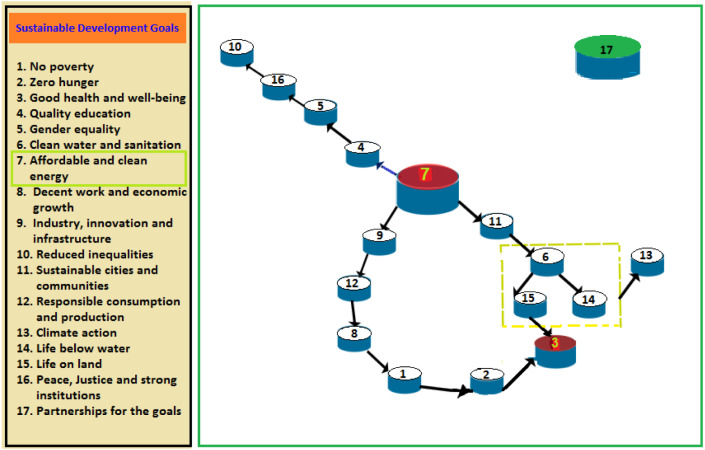The framework of electricity generation, transmission and distribution reflects the subordination of the superstructure of the state to cronyism/state capitalism… The best solution is to take electricity off the exclusive into the residual list and let a thousand flowers blossom. Break up the Transmission Company of Nigeria (TCN), and the national grid into eight to 10 independent zonal grids. Half measures will not cut it.
Given Nigeria’s prostrate fiscal state, the removal of subsidies on petroleum, electricity and the abrogation of the corrupt multiple exchange rate regime is an existential imperative. Now that the government is out of denial on the need to pick our poison, how can these actions be taken in a politically sensitive and sustainable manner? As always, the government has managed the phased withdrawal of electricity subsidy poorly. The increase and reversal loops are indicative of shoddy processes, while the back and forth negotiations with the Nigerian Labour Congress (NLC) shows that the consultation framework involved is not proactive.
READ ALSO: Nigeria records highest power transmission of 5,459.50MW
Here is Nigeria’s scorecard on power consumption and access. According to the World Bank, Nigeria has the largest number of people without access to electricity globally. 43 per cent of Nigerians (85 million people) are not connected to the national grid. This makes Nigeria the global leader in energy access deficit. For the poorest 40 per cent of the population, access to grid electricity is even lower at about 31 per cent nationwide. The average annual per capita electricity consumption of Nigeria is 147 kWh, which is a fifth of the average consumption in low middle-income countries. Of the households connected to grid electricity, most experience blackouts daily, as well as frequent voltage fluctuations.
READ ALSO: BREAKING NEWS: FG orders suspension of adjusted electricity tariff
For those with access to electricity, 22 per cent rely on non-grid sources such as a generators, solar power, solar lantern/lighting systems, rechargeable battery power, etc. Nigerian are good and understanding people, despite the buffeting economic winds. They will understand if the government is sincere and willing to make the case and explain how subsidies causes the overuse of electricity, underinvestment in capacity and theft. There are indications that the withdrawal is already moderating consumption.
For a battered people, the cynicism and skepticism towards government actions and policies are justified. The truth is that Nigerians must be ready to face the long rough road ahead. The government must shed the legacy of military fiat and learn to take its case to the Nigerian people with humility and tact. Let the people know that the well off among them are the major beneficiaries of subsidies. In the case of electricity, the more affluent get more for two reasons. One, the correlation between electricity consumption and welfare is weak because affluent households have low measured consumption.
READ ALSO: We’re ending estimated electricity billing with mass metering initiative — Buhari
Two, subsidy per unit goes down as electricity consumption rises. What this means is that the subsidy received by a household increases until its consumption exceeds about 300kWh per month. At the time of writing this, that is less than twenty thousand naira (N20, 000). The majority of households consume far less than 300kWh/month. Since the rich consume more than the poor on the average, they get more subsidy. What this means is that many homes in the city will not be impacted much by the withdrawal of electricity subsidy. Most rural homes which do not have electric appliances will not be significantly affected. Did the power distribution companies, DisCos and government negotiators present this data to the NLC?
Nigerians are suspicious of the government and DisCos, and justifiably so. Why should we pay more for electricity, with frequent power cuts, over inflated bills and unaccountable customer service by the DisCos? Nigerian are good and understanding people, despite the buffeting economic winds. They will understand if the government is sincere and willing to make the case and explain how subsidies causes the overuse of electricity, underinvestment in capacity and theft. There are indications that the withdrawal is already moderating consumption.The withdrawal of subsidy in the electricity sector is not a cure all. It is much more than that. There are deep-seated corporate governance issues involved. If consumers must make sacrifices, how do we ensure consumer protection from price gaging and exploitation?
READ ALSO: Arewa Students Forum, WASU, NANS, CONYO, ABYCN recognize Farida Princess Ahmed’s philanthropic works
The withdrawal of subsidy in the electricity sector is not a cure all. It is much more than that. There are deep-seated corporate governance issues involved. If consumers must make sacrifices, how do we ensure consumer protection from price gaging and exploitation? According a World Bank report, “Audited financial statements of the DISCOs indicate that the distribution sector is insolvent but the removal of tariff shortfalls will temporarily restore solvency to most DISCOs. At the end of 2018, sector assets totaled ₦1.29 trillion (US$3.34 billion) with liabilities of ₦2.14 trillion (US$5.54 billion), resulting in a negative net equity position of ₦-0.85 trillion (US$-2.20 billion). ₦1.67 trillion (US$4.33 billion) of the liabilities result from tariff shortfalls accrued by DISCOs. FGN has accepted responsibility for the accrued tariff shortfalls on DISCOs books and so these liabilities will eventually be moved off DISCOs’ balance sheets once an appropriate mechanism is established and agreed.
READ ALSO: Falana led-Coalition lists 12 demands, writes Buhari to implement them or ….
FGN has so far funded part of these shortfalls through loans from the CBN while leaving a quarter of it unfunded and hence, owed to the GENCOs and their gas suppliers. According to the PSRP Financing Plan, which is based on the Federal Government Medium-Term Expenditure Framework, new tariff shortfalls will not accumulate beyond 2021. The repayment of outstanding shortfalls as well the debt servicing of the CBN loans are planned to be completed by 2027. Therefore, it is important for the government that scheduled tariff reviews are not disrupted so as to ensure a return to a fiscally sustainable situation during PSRP implementation. Removing shortfalls alone, however, will not be enough to complete DISCOs’ turn-around as this positive equity position will not last while DISCOs continue to deliver electricity at a cost higher than the allowed tariff”. How then do we situate the $350,000 being paid to Mr. Sunday Ayeni monthly, as revealed in the court filing by his lawyers?
The framework of electricity generation, transmission and distribution reflects the subordination of the superstructure of the state to cronyism/state capitalism. With the current framework, Nigeria’s manufacturing will be slaughtered by the Africa free trade agreement. Nigeria cannot compete against Togo, let alone South Africa or Egypt. The best solution is to take electricity off the exclusive into the residual list and let a thousand flowers blossom. Break up the Transmission Company of Nigeria (TCN), and the national grid into eight to 10 independent zonal grids. Half measures will not cut it.
![]()


